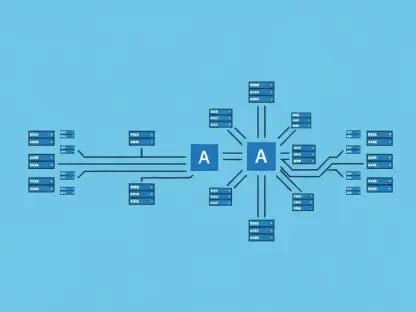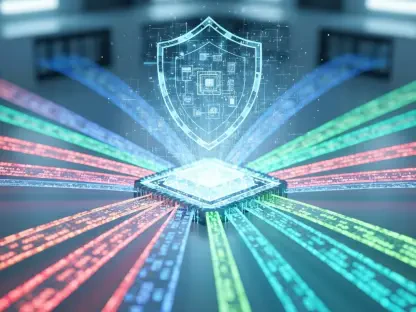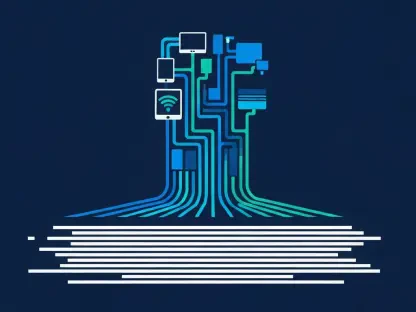In the rapidly advancing field of technology, the interplay between quantum computing and the Internet of Things (IoT) is gaining unprecedented attention. As IoT devices continue to permeate industries ranging from smart cities to healthcare, concerns about their security architecture in the face of emerging quantum computers have become critical. These devices, particularly those designed for long life cycles such as smart meters in low-power wide-area networks (LPWANs), face new vulnerabilities from quantum advancements. The primary challenge arises from quantum computing’s potential to break existing cryptographic systems, which threatens IoT device security and the data they manage. As aligning IoT security with quantum computing readiness becomes more essential, strategies centered on integrating future-proof cryptographic solutions are progressively being explored and debated within the tech community.
Cryptographic Implications of Quantum Computing
Quantum computing holds the promise of revolutionizing computations by performing complex calculations at speeds far exceeding today’s capabilities. However, this quantum leap presents a significant threat to current cryptographic systems. The ability of quantum computers to easily crack widely used public-key cryptographic algorithms like RSA and ECC could render existing IoT security protocols obsolete. As a result, the cryptographic community actively engages in developing quantum-resistant algorithms to counteract these future threats. Prominent institutions, including the National Institute of Standards and Technology (NIST), are deep in the process of standardizing post-quantum cryptography (PQC). The urgency behind PQC integration into IoT devices stems from the need to protect critical data against quantum decryption capabilities that could emerge within IoT devices’ lifespans.
Despite the importance of PQC, its implementation within LPWAN IoT devices like smart meters presents tangible challenges. These devices generally operate with minimal power, restricted bandwidth, and limited memory, which are incompatible with the demands of PQC’s resource-intensive algorithms. Prioritizing feasibility, it becomes crucial to evaluate whether current IoT hardware can sustain the introduction of PQC without necessitating costly and substantial upgrades. The balance between security enhancement and practical limitations underscores the discussion on incorporating quantum-resistant algorithms into the IoT landscape. Amid these deliberations, an understanding persists that a technically sound yet financially viable approach is imperative as IoT deployments continue to grow, demanding flexible solutions adaptable to future cryptographic landscapes.
Identifying Potential Quantum Threat Vectors
The question of who might leverage quantum computers to target IoT devices presents an intriguing dimension to this scenario. Once quantum computers become capable of breaking standard cryptographic defenses, they will likely remain within specialized contexts such as national laboratories or research institutions, owing to their immense cost and complexity. This confines their utilization to entities with the resources to operate them effectively, reducing the probability of targeting devices that yield non-critical data. For instance, IoT devices like smart meters and water sensors gather data of limited strategic value, thereby making them low-priority targets for quantum attacks. Nevertheless, conscious security measures remain crucial, as the trajectory of technological advancements could alter the context in which quantum capabilities are employed.
In this landscape, the concept of contextual security gains importance. Not all IoT data demands robust protection against quantum threats. While some data, like personal location or medical implant firmware, requires stringent safeguards, less sensitive data such as historical water usage does not. Therefore, a nuanced approach to implementing security measures is needed, tailored to the value and sensitivity of the data managed by the device. This situational handling of security protocols encourages strategic allocation of resources, ensuring that IoT devices use security methods proportionate to the risks they face. Thus, adapting security measures based on context enhances efficacy without burdening systems unnecessarily with formidable and potentially redundant quantum defenses.
Exploring Crypto-Agility as a Solution
Crypto-agility emerges as a pragmatic and forward-looking alternative to preemptively adopting quantum-safe cryptography in the IoT realm. Emphasizing the design of systems capable of updating or replacing cryptographic algorithms without hardware modification, crypto-agility maintains security adaptability. This approach permits IoT devices to transition to new cryptographic solutions as they emerge, thus ensuring long-term data protection. By embedding a degree of flexibility into devices, including sufficient memory and computational capacity to accommodate future cryptographic demands, crypto-agile designs maintain efficiency while mitigating risks associated with emergent quantum threats. Particularly for LPWAN deployments, balancing current cost limitations with robust security solutions aligns well with the principles of crypto-agility.
Moreover, crypto-agile design necessitates comprehensive update mechanisms and forward-compatible architectures to facilitate the seamless integration of future algorithms. This ensures that devices can receive necessary updates in a timely manner, preserving the integrity and security of the data they handle. The proactive development of a crypto-agile infrastructure underlines the advantage of preparing for quantum computing rather than hastily adopting as-of-yet unperfected quantum-safe cryptography solutions. As IoT ecosystems evolve, this strategy combines near-term practicality with the foresight necessary to adapt securely to a quantum-capable world, aligning IoT security frameworks with developing technological paradigms.
Securing IoT through Hardware and Hybrid PKI
Beyond software, secure hardware infrastructure plays a critical role in enhancing IoT device security in anticipation of quantum computing threats. Secure hardware elements like Trusted Platform Modules (TPM) and Secure Elements (SE) offer additional protection layers by securely storing cryptographic keys and providing robust security functions. TPMs support devices through secure key generation, storage, and firmware integrity assurance, while SEs, suitable for constrained environments, offer similar benefits tailored for specific device limitations like those found in smart meters. These hardware components enhance security by implementing anti-rollback protection, key attestation, and resistance to side-channel attacks, which are crucial for ensuring device resilience over extended operational periods.
Furthermore, implementing a hybrid Public Key Infrastructure presents a viable pathway for transitioning current cryptographic systems to those that accommodate post-quantum standards. By leveraging conventional ECC or RSA-based certificates while preparing for PQC certificate integration, a hybrid PKI model effectively bridges today’s standards with future needs. Designing PKI components such as Root Certificate Authorities (CAs) and Registration Authorities (RAs) to support crypto-agile enrollment allows for gradual algorithm updates without extensive system overhauls. This enables smooth transitions over time while enforcing certificate renewal policies that maintain ongoing security. Such an approach aligns IoT security with broader cryptographic shifts, facilitating a secure and adaptive journey toward quantum readiness among IoT deployments.
Moving Forward with IoT Security
Quantum computing promises to revolutionize calculations, performing complex tasks at unprecedented speeds, but poses a threat to current cryptographic systems. Quantum computers can crack widely used cryptographic algorithms like RSA and ECC, potentially making IoT security protocols obsolete. Consequently, the cryptographic community is developing quantum-resistant algorithms to address these threats. Institutions like the National Institute of Standards and Technology (NIST) are busy standardizing post-quantum cryptography (PQC) to protect critical data from quantum decryption within IoT devices’ lifetimes.
However, implementing PQC in LPWAN IoT devices such as smart meters is challenging due to their limited power, bandwidth, and memory, which don’t mesh well with PQC’s resource-heavy demands. It’s vital to assess whether current IoT hardware can integrate PQC without major upgrades. This highlights a delicate balance between enhancing security and maintaining practicality. As IoT technology advances, finding a technically robust yet cost-effective approach is essential to adapt to evolving cryptographic needs.









